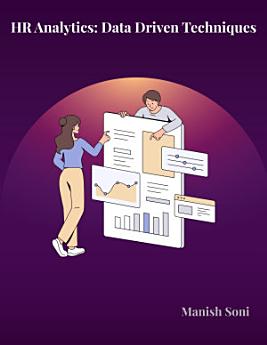HR Analytics: Data Driven Techniques
About this ebook
This book begins with a deep dive into the "Factors to Measure in HR Analytics", where we explore the fundamental aspects of HR analytics, including key factors, objectives, and the influence of human biases like naivety, entomologist, confirmation, projection, and stereotyping biases. Our journey then transitions into the basics with "Analytics — Introduction", providing a foundational understanding of analytics, including how to define, collect, organize, and visualize data using Excel's diverse charting capabilities such as pie charts, column charts, and the latest additions like histograms and treemaps.
"Hiring Analytics and Challenges" addresses the practical application of analytics in hiring processes, discussing benchmarking, competency-based recruitment, and the critical role of interviewer bias. This section is essential for anyone looking to refine their hiring practices using data-driven strategies.
"Introduction to HR Analytics" sets the stage for the rest of the book, outlining the definition, scope, and importance of HR analytics in modern business. As we delve into the "Fundamentals of Microsoft Excel for HR Analytics", readers will gain practical skills in utilizing Excel for data management and analysis – a critical tool in any HR professional's arsenal.
The book then guides you through various analytical techniques, starting with "Descriptive Analytics in HR", where you learn to perform basic statistical analysis and data interpretation. "Performance Metrics" provides insights into structuring and applying performance metrics effectively, while "Compensation and HR Analytics" delves into creating comprehensive compensation frameworks and policies.
For those interested in more advanced topics, chapters like "Diagnostic Analytics in HR", "Predictive Analytics in HR", and "Prescriptive Analytics in HR" cover everything from regression analysis to predictive modelling and strategic planning using Excel. We also explore "Advanced Excel Functions for HR Analytics" for more seasoned Excel users, aiming to automate and enhance their data analysis.
The book does not stop at analytics within Excel; "Integrating Excel with Other HR Systems" provides valuable insights into how Excel can interact with various HRIS and other tools, emphasizing the importance of integration in modern HR practices.
A highlight of this book is the "Case Study - Hiring Through Numbers — Using Hands-On Excel", offering a practical, step-by-step approach to applying HR analytics in real-world scenarios. This is complemented by "Case Studies and Real-World Applications", where we explore industry-specific examples across healthcare, technology, retail, and manufacturing sectors.
"HR Analytics: Data-Driven Techniques" is not just a book; it's a journey into the heart of HR analytics. Whether you're an HR professional seeking to enhance your analytical skills, a student aspiring to enter the HR field, or a business leader looking to implement data-driven HR practices, this book is your comprehensive guide to mastering HR analytics with Microsoft Excel.






